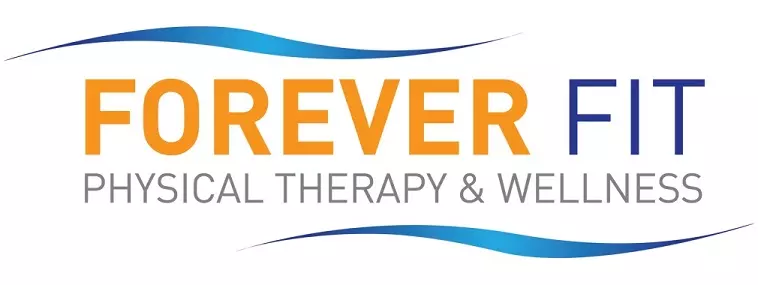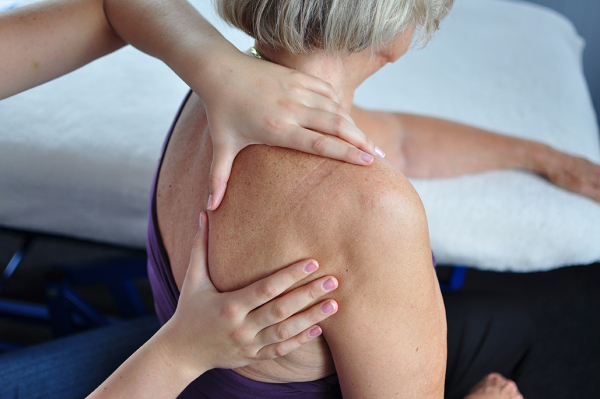One of the most mobile parts of the human body, the shoulder is a ball-and-socket joint made up of bones, ligaments, tendons and muscles. It’s the reason you can throw a baseball, reach a glass in your top cupboard and high-five your best friend.
When one part of your shoulder is injured, it can limit how comfortably you’re able to do these things and more. In this article, we’ll discuss a few types of shoulder injuries and how targeted shoulder treatments, like physical therapy, can help you recover.
Top 5 shoulder injuries treated by physical therapists
Shoulder pain is one of the most prevalent joint issues among athletes, adults and others. However, it can be caused by a number of different ailments, so it’s important to discuss your symptoms with a health care professional. The five most common types of shoulder injuries include:
-
Biceps tendinitis
The biceps muscle runs along the front of your upper arm and connects to your shoulder joint with two tendons. Part of this muscle attaches at the top of the shoulder socket (the long head), while the other part (the short head) connects to the front of the shoulder blade. If you have biceps tendinitis, this means that the tendons have become irritated or inflamed.
With this condition, you may notice some pain, swelling and tenderness at the front of your shoulder and a snapping sensation or sound when you move your arm.
-
Rotator cuff tears
The rotator cuff is a group of muscles and tendons that surround the shoulder joint and attach your humerus (upper arm bone) to your shoulder blade. If you’ve torn one or more parts of your rotator cuff, the tendon may become partially or fully detached from your arm bone. This could be due to an injury, like lifting something too heavy, or develop slowly over time in your dominant arm.
With this injury, you may notice the following symptoms:
- Shoulder pain while raising, rotating or lowering your arm
- Difficulty lifting objects or moving your arm
- Popping, crepitus (crackling sensations) or clicking sounds in certain positions
-
Rotator cuff tendinitis
This shoulder injury occurs when one of the tendons in your rotator cuff is irritated, swollen or inflamed. It’s common for athletes who play sports that require them to lift their arms overhead, like swimming, volleyball and tennis. It’s also a common repetitive injury for construction workers, painters and other people who perform the same arm motions day after day.
Rotator cuff tendinitis may cause discomfort at night when you’re trying to sleep or when you’re awake and active. Symptoms may include:
- Stiffness when you lift your arm or reach behind your back
- Swelling and pain localized to the front of your shoulder and side of your arm
- Limited range of motion or arm weakness
-
SLAP tears
A SLAP tear is an injury to the top part of the cartilage (labrum) that lines your shoulder socket, often affecting the front and back of this structure. The labrum is a type of cartilage. This tough, fibrous tissue runs around the socket, keeping the bones and ligaments that make up your shoulder joint in place.
The symptoms of a shoulder SLAP tear may include:
- Locking, grinding or popping sensations
- A dull aching feeling in the area (either persistent or only when your arm is in certain positions)
- Weakness in your shoulder, especially during activities like throwing a ball or lifting objects overhead
- Feeling like your shoulder might dislocate at any moment
-
Shoulder instability
An unstable shoulder joint typically develops when your ligaments, tendons or muscles are loose or torn. Shoulder instability occurs when the ball (humeral head) of this “ball-and-socket” joint moves out of the socket. It may be partially or completely forced out, which could resolve on its own or require assistance from a medical professional. Signs of shoulder instability include:
- Frequent shoulder dislocations
- Feeling like your shoulder is looser than usual or might “give out”
- Pain, swelling or bruising in the area
- Decreased shoulder mobility
How the shoulder treatments in physical therapy help
For these and other shoulder injuries, the goal of physical therapy is to decrease pain and increase range of motion. Your practitioner may use manual therapy, which may help reduce pain in targeted areas, or recommend gentle shoulder mobility exercises. Gradually, they may also suggest some stretching and strengthening exercises to help build up the muscles that support this joint and help prevent future issues.
Your shoulder-strengthening program may target several muscle groups, such as the:
- Deltoid muscles that surround the top of your shoulder
- Biceps at the front of your upper arms
- Triceps at the back of your upper arms
- Upper back area (trapezius and rhomboid muscles)
A program like this often also includes several shoulder stretches to help release muscle tension and increase flexibility. Each shoulder-rehab program targets specific issues and concerns to address the needs of each patient.
Consult the PT team at Forever Fit for shoulder injuries
When you’re injured, Forever Fit can help you find relief from shoulder pain and get back to doing everyday activities more comfortably. Serving patients in Severna Park, Frederick and other central Maryland areas, our PTs are experienced in treating a wide range of injuries. We offer several conservative shoulder treatment options and make it a point to cultivate a personalized relationship with each of our clients.
Contact our team for more information today or to schedule an appointment.

